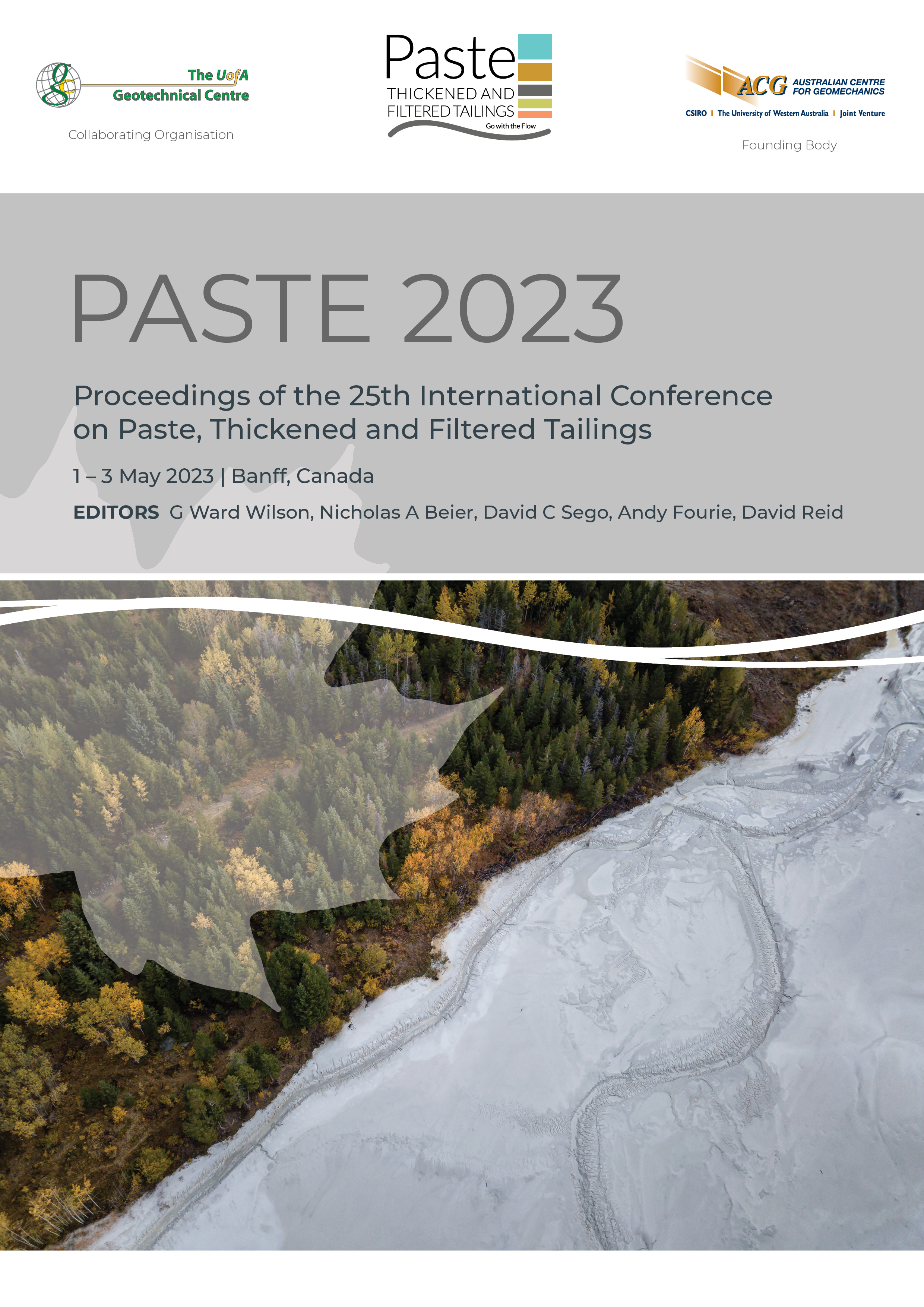Rheological testing for dam break modelling

|
Authors: McPhail, GI; Ugaz, R; Garcia, F |
DOI https://doi.org/10.36487/ACG_repo/2355_45
Cite As:
McPhail, GI, Ugaz, R & Garcia, F 2023, 'Rheological testing for dam break modelling', in GW Wilson, NA Beier, DC Sego, AB Fourie & D Reid (eds), Paste 2023: Proceedings of the 25th International Conference on Paste, Thickened and Filtered Tailings, Australian Centre for Geomechanics, Perth, pp. 601-609, https://doi.org/10.36487/ACG_repo/2355_45
Abstract:
The rheology of tailings that have been discharged onto a tailings storage facility (TSF) and allowed to sediment out, consolidate and then undergo liquefaction is significantly higher than the rheology of the slurry in the initial discharge stream. This can be ascribed to a combination of factors that include higher solids concentration, stress state and history, re-establishment of flocculant bonds, and natural coagulation and agglomeration measurement of the rheology of the liquefied tailings therefore requires that samples undergo similar sedimentation and consolidation processes without disturbing the samples. In addition, many TSFs are constructed of two different materials, where coarser tailings are separated from the tailings stream using hydrocyclones and used to contain and confine finer tailings or applied as drainage layers. On liquefaction of the fines, the liquefied rheology will be influenced by the coarser, better-drained tailings as this is entrained with the fine tailings. Moreover, some of the supernatant water that accompanies the liquefied tailings during flow liquefaction will be entrained with the tailings, effectively diluting the liquefied slurry and impacting the rheology. All of these factors need to be considered in the course of a dam break analysis due to the influence of rheology on the fluid dynamics during flow and therefore of the resulting inundation characteristics. This paper describes laboratory and semi-pilot scale testing methods developed and applied by the authors in dam break analyses. The tests are able to address the factors of sedimentation, consolidation, stress history, material combinations and mixing, as well as supernatant water. The influence of these factors as measured in the tests is described.
Keywords: rheology, rheological testing, dam break, flow slide, liquefaction
References:
Ugaz, R & McPhail, G 2022, ‘Determination of the rheology of liquefied bauxite residue using a pilot scale dam break test’, Proceedings of the Seventh International Conference on Tailings Management, Gecamin Publications, Santiago.
© Copyright 2026, Australian Centre for Geomechanics (ACG), The University of Western Australia. All rights reserved.
View copyright/legal information
Please direct any queries or error reports to repository-acg@uwa.edu.au
View copyright/legal information
Please direct any queries or error reports to repository-acg@uwa.edu.au



